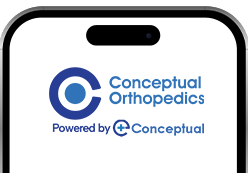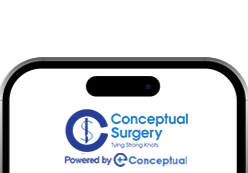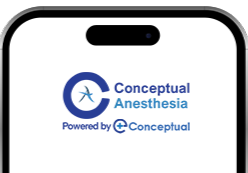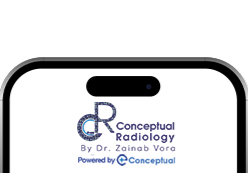
Estimated reading time: 3 minutes
One of the problems that often appears during medical residency when studying endocrinology is acromegaly. Understanding its causes, types, and clinical features is not only important for exams but also for diagnosing patients early in clinical practice.
In this blog, let’s simplify acromegaly into clear concepts so you can confidently approach it in residency, clinical discussions, and exams.
What is Acromegaly?
Acromegaly is a hormonal disorder caused by excess growth hormone (GH).
- When GH excess happens before epiphyseal plates close, it leads to gigantism (overlinear growth).
- If GH excess happens after bone fusion, it causes acromegaly, where bones do not grow in length, but organs and tissues swell.
The condition impacts several systems, and its early detection is essential.
Causes of Acromegaly
Acromegaly is caused by an excess of growth hormone excess. This may result from:
1. Primary GH Excess (Pituitary Causes)
- Pituitary adenoma (most frequent, >98%)
- Types of GH-secreting adenomas:
- Densely granulated GH cells
- Sparsely granulated GH cells
- Mixed GH + prolactin-secreting tumours
- Occasionally: pituitary carcinoma
2. Extra-Pituitary GH Excess
- Ectopic GH secretion (rare)
- More frequently, ectopic secretion of GHRH (Growth Hormone Releasing Hormone) by neuroendocrine tumours like:
- Bronchial carcinoid
- Pancreatic neuroendocrine tumours
- Small-cell lung carcinoma
- Medullary thyroid carcinoma
- Pheochromocytoma
3. Genetic & Familial Syndromes
- MEN (Multiple Endocrine Neoplasia) type 1
- McCune-Albright syndrome
- Familial acromegaly
- Carney’s complex
Clinical Features of Acromegaly
Acromegaly involves several systems. It helps to categorise them for easier recall.
1. Local Tumour Effects
- Enlargement of the pituitary
- Visual field defects (classically bitemporal hemianopia)
- Headache (due to increased intracranial pressure or release of nociceptive peptides)
- Cavernous sinus involvement – cranial nerve palsy
2. Somatic Changes
- Acral enlargement: spade-shaped hands, large feet
- Prognathism (enlargement of the jaw) → dental malocclusion
- Carpal tunnel syndrome and neuropathies
- Thickened skin, hyperhidrosis, oily skin
- Skin tags and colon polyps (secondary to IGF-1 excess)
3. Musculoskeletal
- Proximal myopathy
- Frontal bossing (bossed forehead)
- Bone and joint pain secondary to overgrowth
4. Cardiovascular
- Hypertension (frequent)
- Left ventricular hypertrophy
- Cardiomyopathy and risk for congestive heart failure
5. Respiratory
- Obstructive sleep apnea (OSA)
- Central sleep apnea (rarely)
6. Endocrine & Metabolic Effects
- Insulin resistance → Diabetes mellitus
- Dyslipidemia, hyperuricemia
- Menstrual irregularities in females, hyposexuality in males
- Galactorrhea (if prolactin is co-secreted)
- Gynecomastia in men
7. Organomegaly
- Hypertrophy of the liver, spleen, kidneys, thyroid, salivary glands, tongue, prostate, and breasts
8. Bone & Mineral Effects
- Hypercalcemia and hypercalciuria (secondary to resorption of bone)
- Risk of thyroid nodules and carcinoma
How to Suspect Acromegaly in Clinical Practice?
Always suspect acromegaly when you encounter:
- Uncontrolled hypertension in young patients
- Uncontrolled diabetes with optimal therapy
- Obstructive sleep apnea in otherwise normal persons
- Coarse facial features, acral enlargement, unexplained headaches
Key Takeaways for Residents
- Acromegaly = GH excess after epiphyseal fusion
- Greater than 98% of cases are caused by pituitary adenomas
- Gigantism vs Acromegaly depends on bone fusion status
- Systemic manifestations involve nearly every organ system
- Always suspect acromegaly in resistant hypertension, uncontrolled diabetes, and OSA
Conclusion:
At Conceptual Medicine, we understand that Acromegaly is more than “big hands and feet.” It is a systemic disease with serious morbidity if not diagnosed. As a medicine resident, knowing the causes, types, and clinical presentation will assist you not only during exams but in making important diagnoses in actual patients.
Early suspicion, appropriate workup, and early referral to endocrinology can dramatically alter outcomes.
To get a more fruitful session of medicine, subscribe to Conceptual Medicine and ace your residency.
Click Here to watch: Acromegaly in Medicine Residency | Causes, Types & Clinical Features | Dr. Priyadarshni










